Over the millennia, ornamentation has been used in architecture and design for countless reasons. For some, the design isn’t complete until it has a few smaller pieces or a border attached to a main structure as a reinforcement of the design’s theme. This is very apparent in Louis Sullivan’s work, where the terra cotta decorations on his skyscrapers reinforced the organic theme of the building.
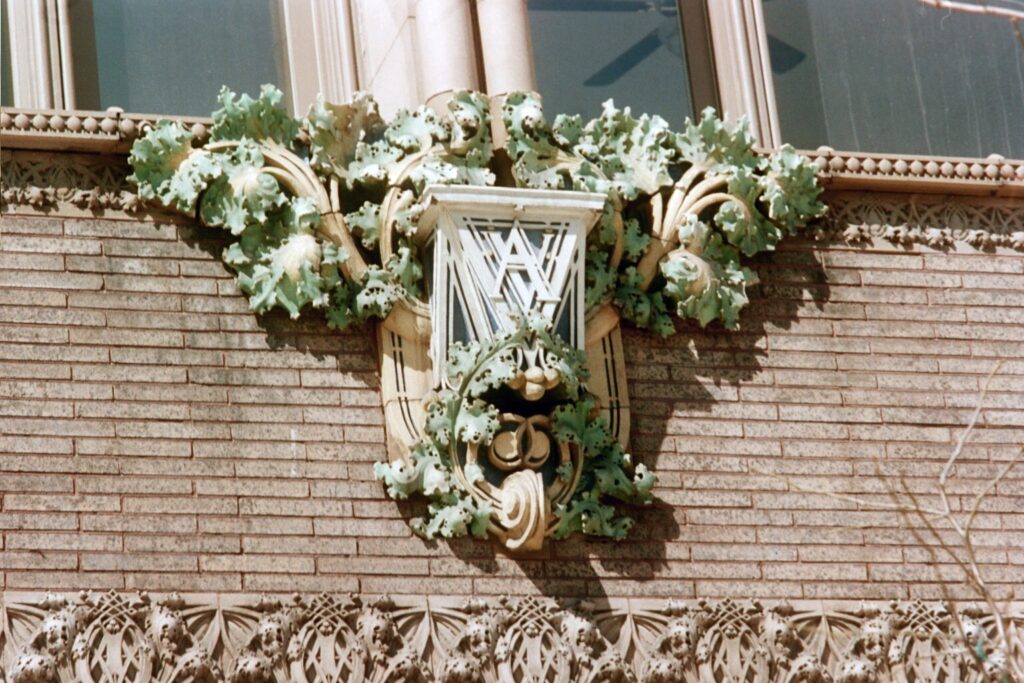
Louis Sullivan’s ornamentation on the Van Allen building
In classical design, one purpose of ornamentation is to reveal the elements of a building that were originally wooden, such as dentils.
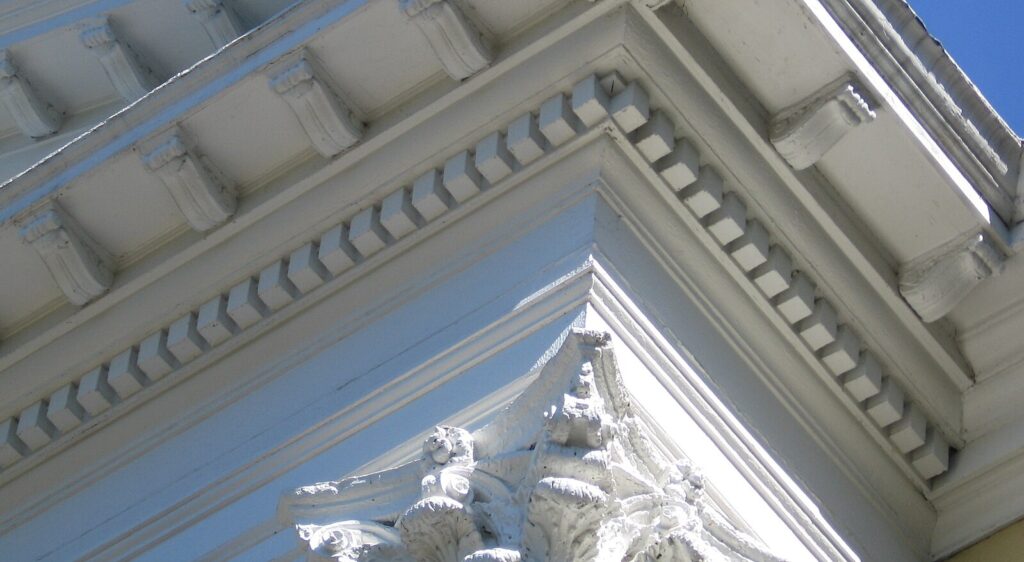
Dentilation used on a classical building
Another purpose is to show the purpose of the structure. In churches and cathedrals, for example, the ornamentation is a display of Christian themes.
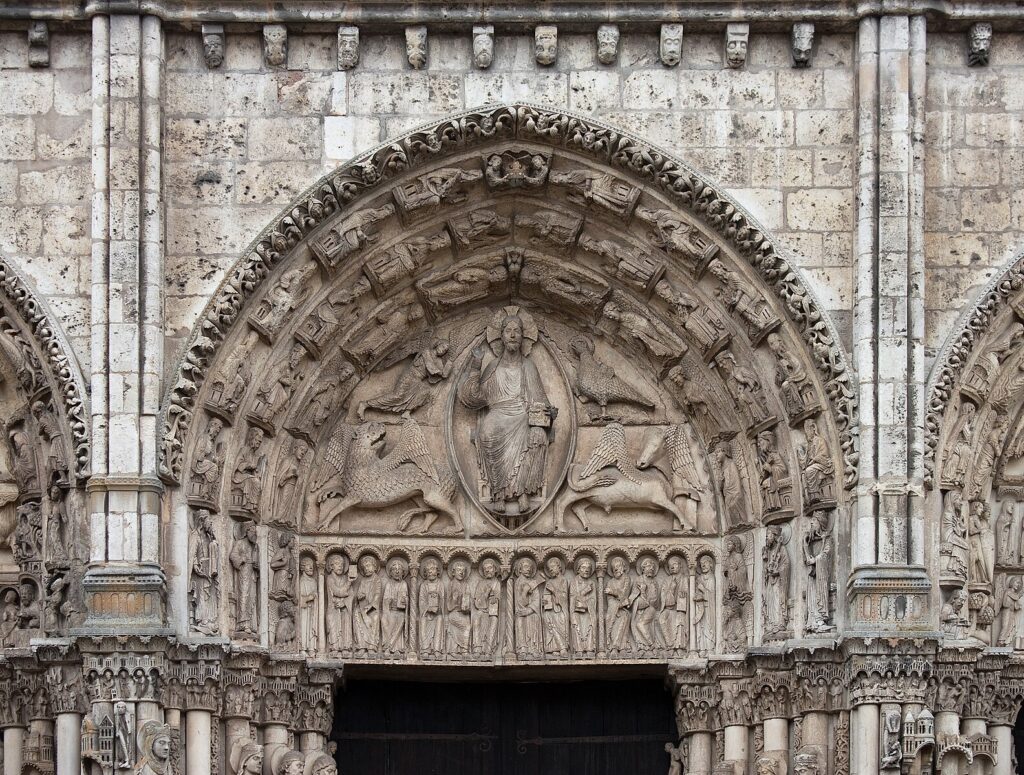
The central tympanum of Chartres Cathedral
Despite the different reasons behind ornaments, one still finds that the borders are fractal. That is, they practice self-similarity. If one looks at the various elements of a structure, such as a wall and a window or a porch and a yard as systems, the merging of those systems requires a border. And the border is most beautiful when that border is fractal. Just as in nature, where two separate systems mix, for example, water vapor (clouds) and air, you will find fractals.
Modernity Detaches from Ornament
Many modern architects consider ornamentation as a superfluous addition to a structure or design that adds nothing worthwhile and can thus be discarded. They will point to Baroque and Rococo with their overly dramatic and emotionally intense additions. The purity of true, geometrical form doesn’t need any enhancements, they might argue. The origins of this philosophy began in earnest with Bauhaus, where it emphasized machine technology and function. O. B. Hardison, Jr. writes in “Disappearing through the Skylight”, on the idea that influenced Bauhaus’ founder, Walter Gropius:
In 1916, Gropius identified the new aesthetic with industrial products: “Accurately cast forms, bare of ornamentation, having clear contrasts and consistency of form and color, become commensurate with the energy and economy of modern life.”

Bauhaus in Dessau (1925-1932)
As a result, the borders do not practice self-similarity. One suspects that architects today use these strong, utilitarian lines and mathematical functions to prove that we can move beyond the constraints of Natural Law. For example, Amazon is a trillion dollar company and its headquarters is a group of glass and steel towers rising in defiance of the fractal basis of Nature.
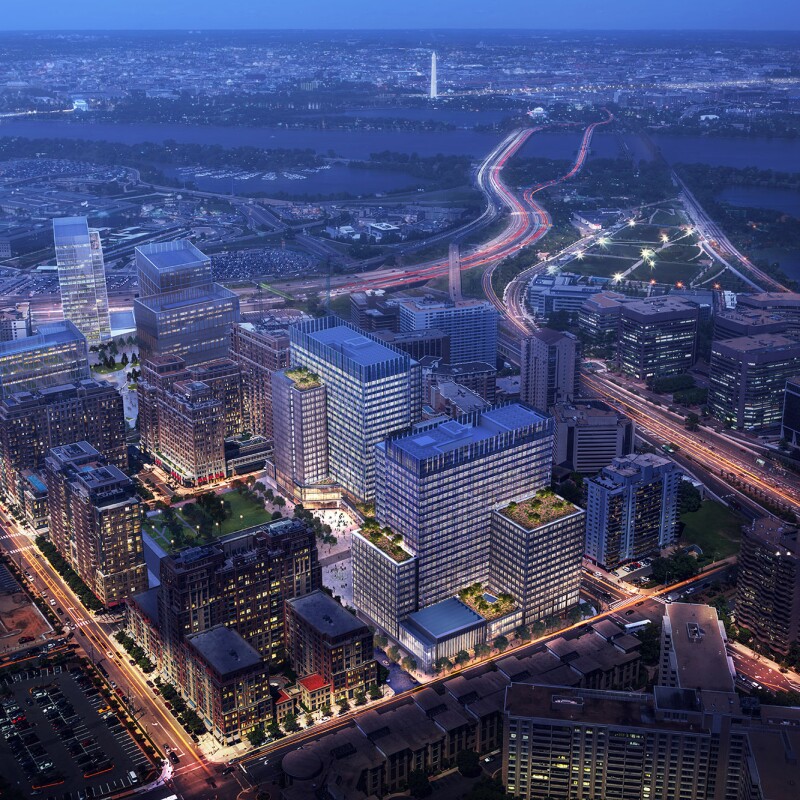
Amazon headquarters
This architecture is reminiscent of Spengler’s, “Faustian Man”, where humanity believes it will eventually divorce itself from the constraints of Nature and either reach out to the infinite unknown of space or to embed consciousness into the artificiality of a computer chip.
Fractals as Ornaments
In an earlier post I wrote that Nature’s borders are fractal. I believe earlier generations had a strong intuition regarding borders and knew that a building or any design needed self-similarity to soften its edges. They recognized how Nature worked. That is why today’s built environment is a stark contrast to natural forms. The strong, abstract lines, whether Euclidean or based on mathematical functions, clash with the lines of Nature when imposed without self-similarity. However, when a built structure gives way to Nature, such as a derelict or decayed building, you will see the strong lines softened by erosion and vegetation.
This is one reason why we have intuitively added ornamentation to a structure or design. It makes the object look natural. Rather than having stark, utilitarian lines artificially project, we gently enhance the lines by using self-similarity of scale, or fractals.
In my walk around Keene, New Hampshire, where older buildings still line the streets, one can easily see the use of ornamentation as a means to soften borders. Windows, porches, eaves, even chimneys all exhibit a self-similarity on the edges.
Use of ornamentation to soften borders on older structures:
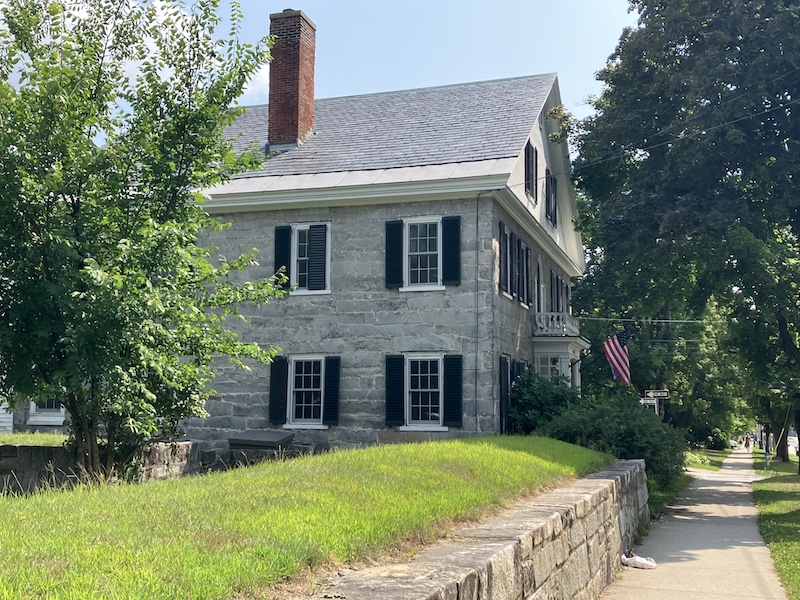
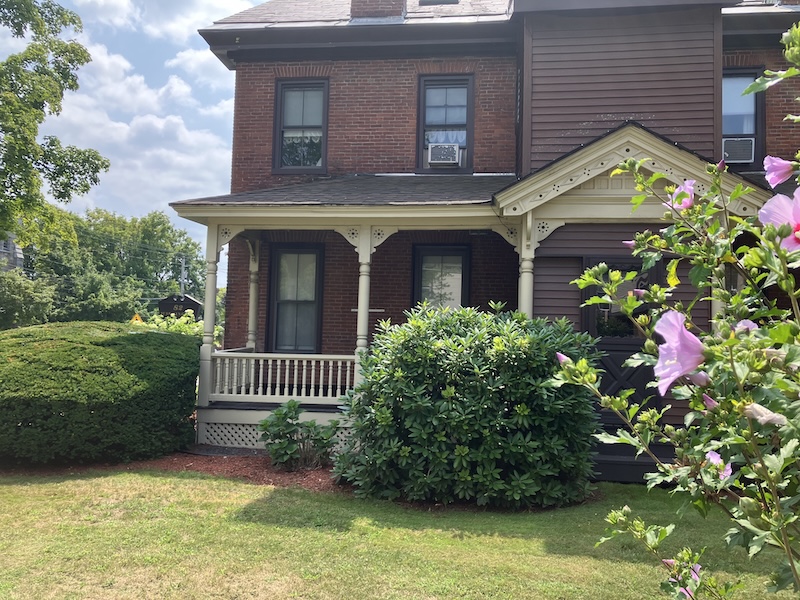
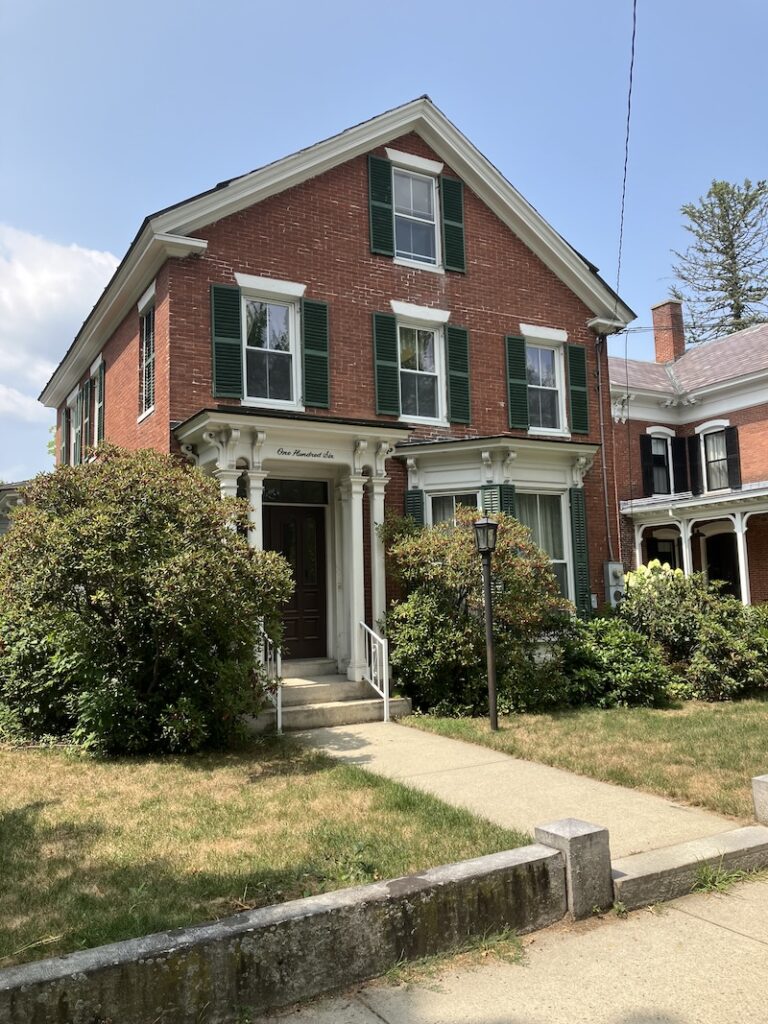
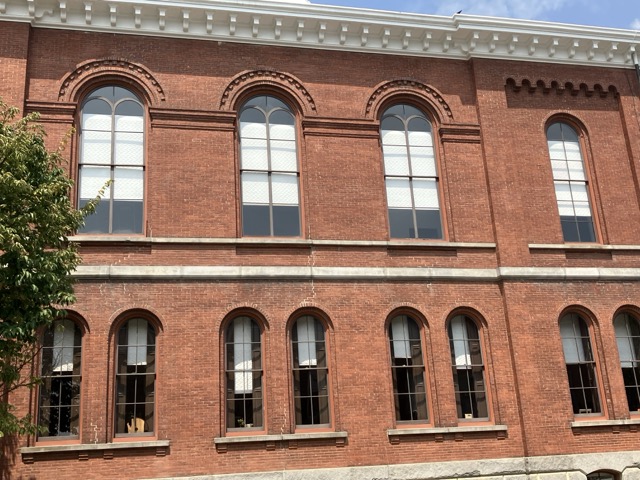
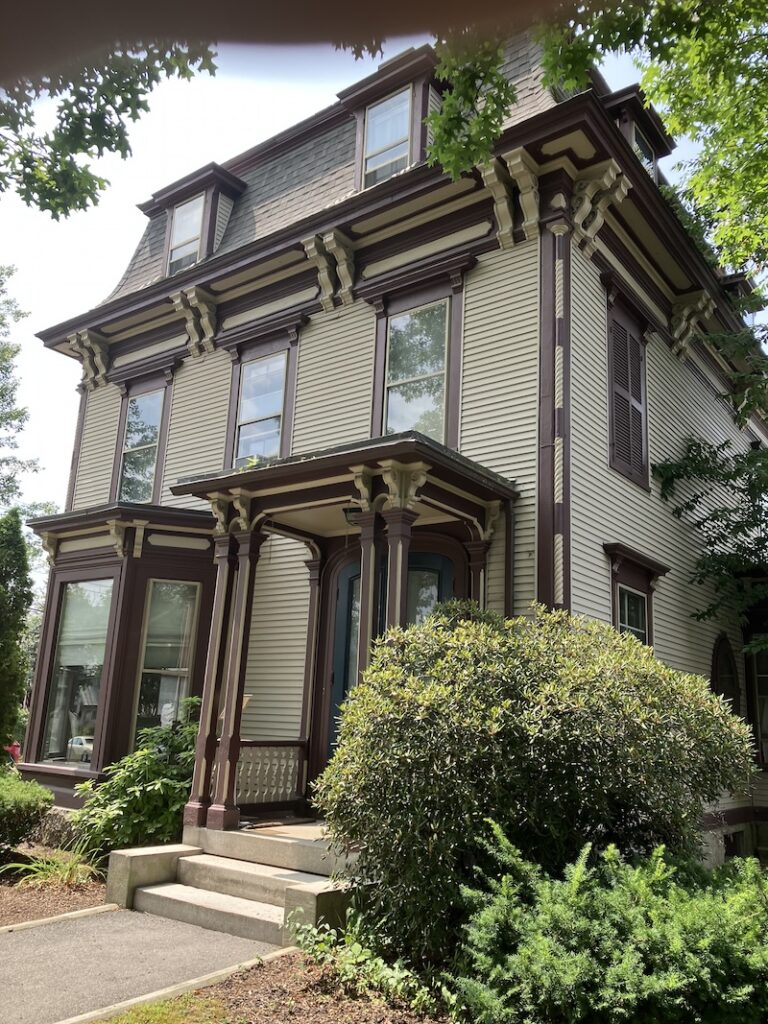
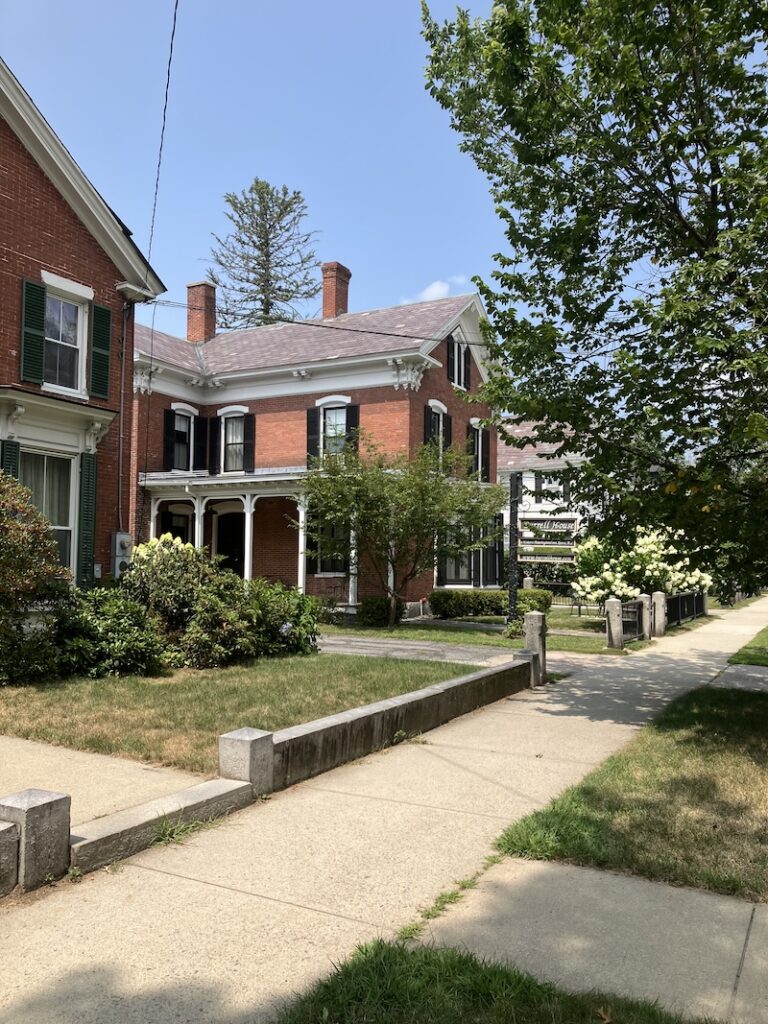
Compared to modern buildings:
On the other hand, the modern buildings leave only bare lines that clash with natural form.
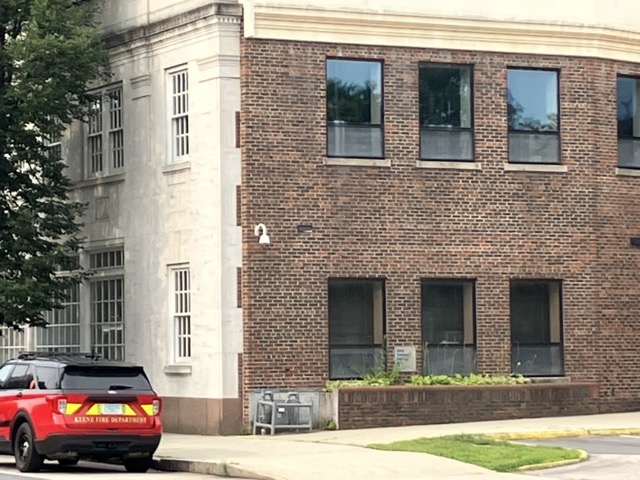
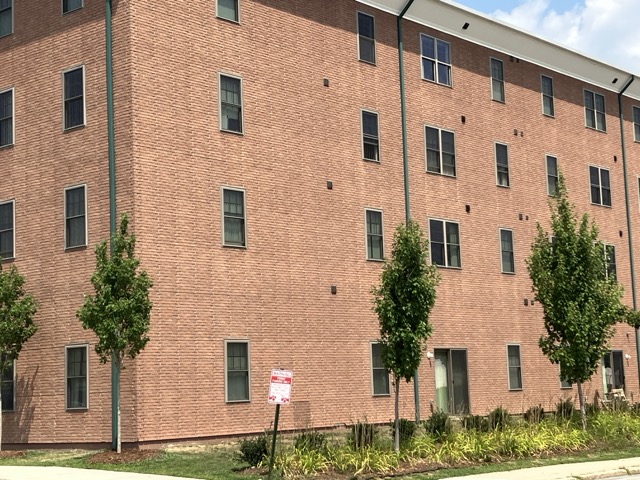

Not just buildings:
The fractals can be found throughout all parts of exterior furnishings, such as signs and even fences.
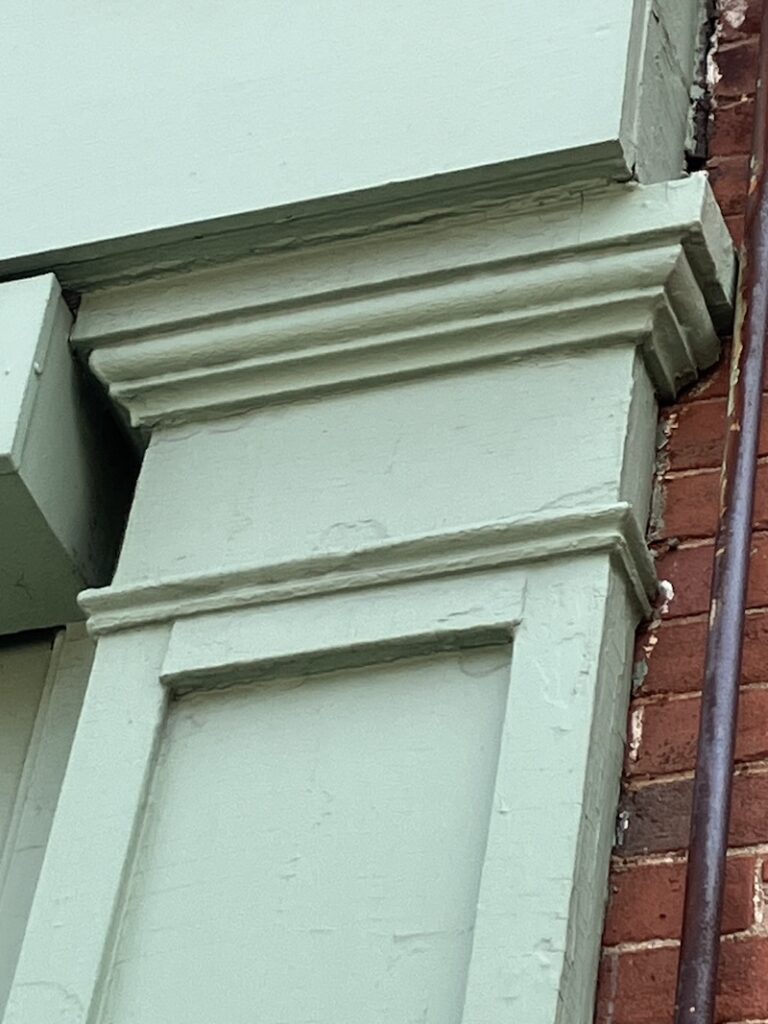
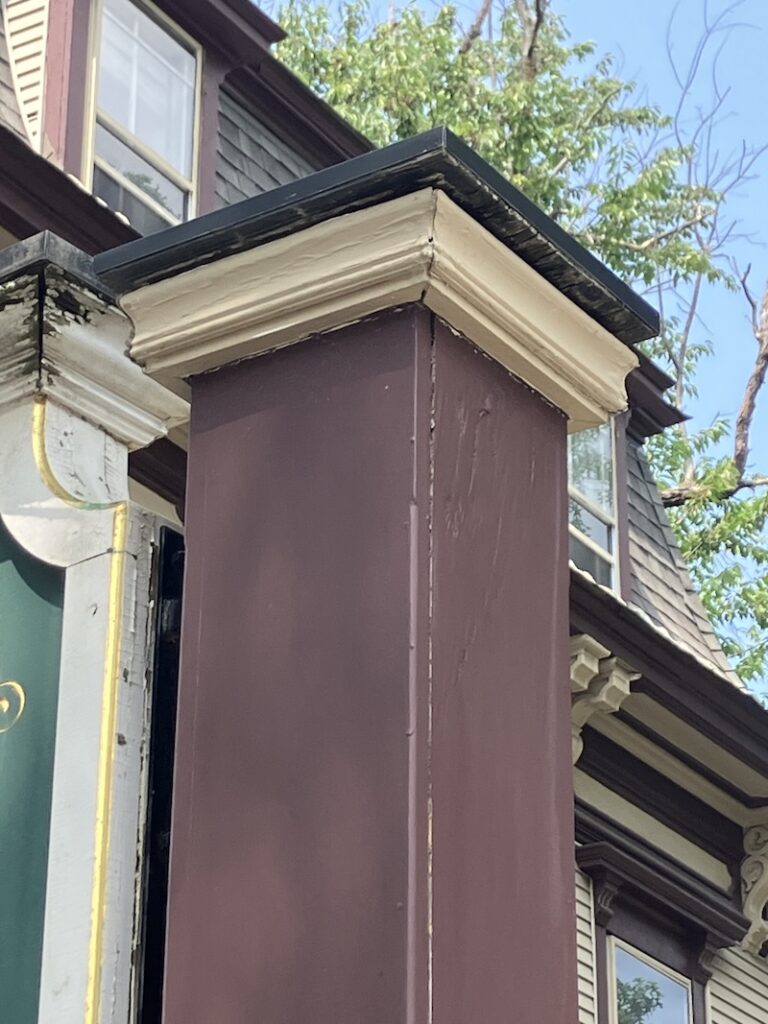
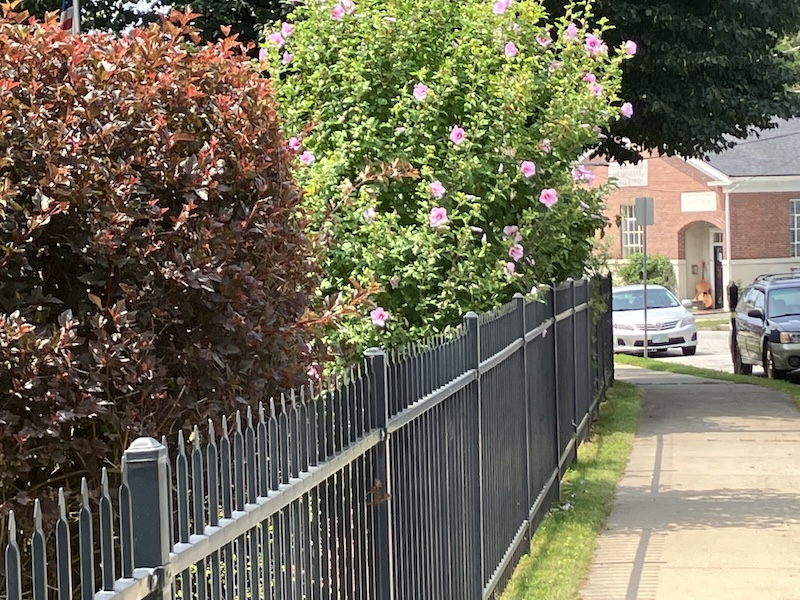
When creating a design, whatever pattern you desire to use, it will have much more resonance and power if you soften its borders with fractals. Use the principles in the design you’ve created and repeat it on the edges. It will be much more beautiful. And you will find that ornamentation, rather than being superfluous or irrelevant, adds harmony and beauty to your creation.